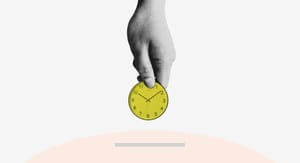During dinner, my daughter said she was feeling cold. The first thought that popped into my head: Is she having a fever? I reached for the thermometer, hoping it was nothing but also mentally preparing myself for a potentially long night ahead.
This is a familiar scene for parents with young kids. You've got the paracetamol, blankets and cold patches ready. You check temperatures hourly, make sure they're properly insulated, all while keeping your own anxiety in check.
As her temperature started to climb, we gently tried to convince her to take some meds and place a cold patch on her forehead. Like always, it took some negotiation. At one point, I even showed her the thermometer as proof she was, in fact, having a fever.
Then came a question that is simple, honest and surprisingly profound:
“If I’m getting hotter, why do I feel cold?”
I paused for a moment and thought to myself: Why do we shiver when we’re burning up on the inside?
The balancing act
We have a fever because our body raises its internal temperature set point to help fight off infection. The higher temperature creates a more hostile environment for invading pathogens and gives our immune system a better chance to turn the tide.
The side effect of this shift is that everything around us suddenly feels colder by comparison.
We shiver not because our body temperature is low, but because the body thinks it needs to get even hotter to reach its new internal target. It’s trying to find equilibrium, but that balance keeps shifting as the battle rages inside.
It's all relative
This constant push for alignment between our internal state and external environment goes far beyond body temperature. It also affects us mentally, emotionally, and behaviorally, depending on the context we’re in.
Spend time with people who are getting by with very little, and you may feel grateful and fortunate for what you have. But surround yourself with millionaires spending freely on luxuries, and suddenly your own life can feel inadequate or unfair.
How we feel often has less to do with our actual circumstances, and more to do with how we compare ourselves to those around us. Our expectations shift in response to our environment, just like how our body responds to a new set point during a fever.
Curate your Environment
We can leverage this innate drive to reach parity with our environment by carefully curating where we spend our time and who we spend it with.
If you want to be more disciplined, surround yourself with people who hold themselves to high standards. You’ll naturally begin to adopt their habits as you strive to align with them.
If you’re trying to save money, spend time with people who live below their means. Frugality will start to feel normal, not restrictive.
If you want to take more risks, step into rooms where action is the default, where people are building, experimenting, and starting things. Soon, hesitation will feel out of place.
And if you feel demotivated or uninspired, take a hard look at your surroundings. Are the people around you encouraging and driven? Or are they stuck in the same patterns you’re trying to escape?
Change your Environment, Change your Life
The environment around you isn't just background noise. It's more like a thermostat. It sets the boundaries of what you see as normal and what you believe is possible.
When willpower alone isn't enough to push you forward, change your environment. Tip the balance in your favor by surrounding yourself with people and places that reflect the version of you that you're striving to become.
The next time my daughter has a fever, which I hope it's not anytime soon, I'll know the answer to both her question and a deeper one about growth:
How we feel and how we act are often less about what’s happening inside us, and more about the world we’re reacting to.
Just as we manage her temperature by adjusting her environment with cold patches and blankets, we too must shape the environments we live in to give ourselves the best chance to thrive.





Comments